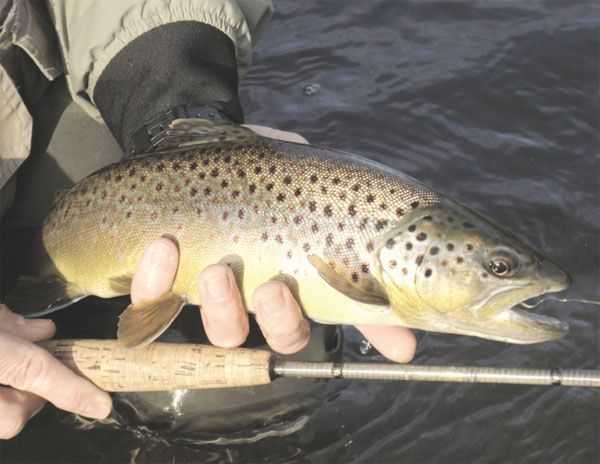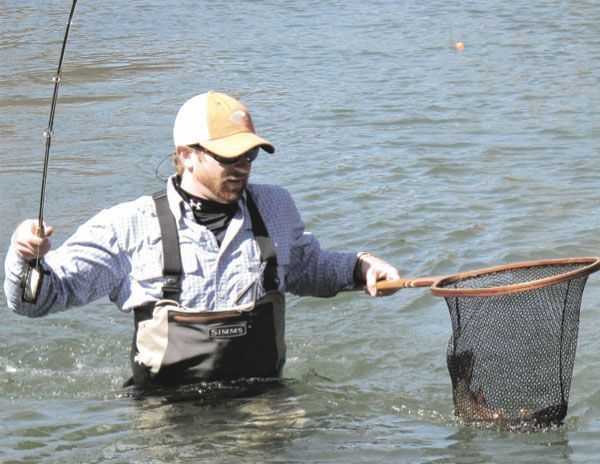Well, this year even we southerners have had a spell of winter that’s kept us inside near the fire tying flies for the expectant spring we’re so desperately looking for. But let’s look forward and not back; it’s too painful.
March is the time when things begin to start turning around and the trout fishing can be excellent…if you approach it correctly. There is actually a science to determining which flies to use based upon which wild- flowers are blooming and there’s even a very detailed book on the subject titled “Trout Flies & Flowers” by Ivan L. Mahoney. I know some anglers who swear by it and I’m pretty much convinced of its application myself.
One of the first early spring wildflowers we find popping up through the detritus of leaves, limbs and bark is Trillium cuneatum or more commonly known as Purple Toad- shade or Sweet Betsy. A single stunning deep maroon flower sitting atop 3 dappled leaves is unmistakable and a sure sign we’ve beat back winter once again.
Flies hatching in March on our freestone streams will be Quill Gordons, Blue Winged Olives, Early Black Stones and, later in the month, March Browns. On our tailwaters, you’ll find Caddis, Early Black Stones and Blue Winged Olives.
So, now that you know what flies to use, how do you rig them? Early in the day, be- fore water temperatures begin to rise, line your rod with a 7 1⁄2’ leader with your dry fly attached to 4X or 5X. To the bend of that hook, tie on about 4 – 6 feet of 5X tippet, add a small split shot that won’t sink your dry and tie on a Hares Ear Nymph. With this rig, you’ve got to open up your cast or simply make a water haul to keep all that tippet from tangling but it works great. Use your dry fly as an indicator.
Later on, when the bugs begin to come off, cut off most of that long dropper (back to 2’) and tie on a soft hackle emerger. At the end of your drift, let this rig swing around on a tight line, skating your dry fly on the surface if possible and hang on. Dry/droppers, no lead. It’s about the get really good!
[easy-social-share]


